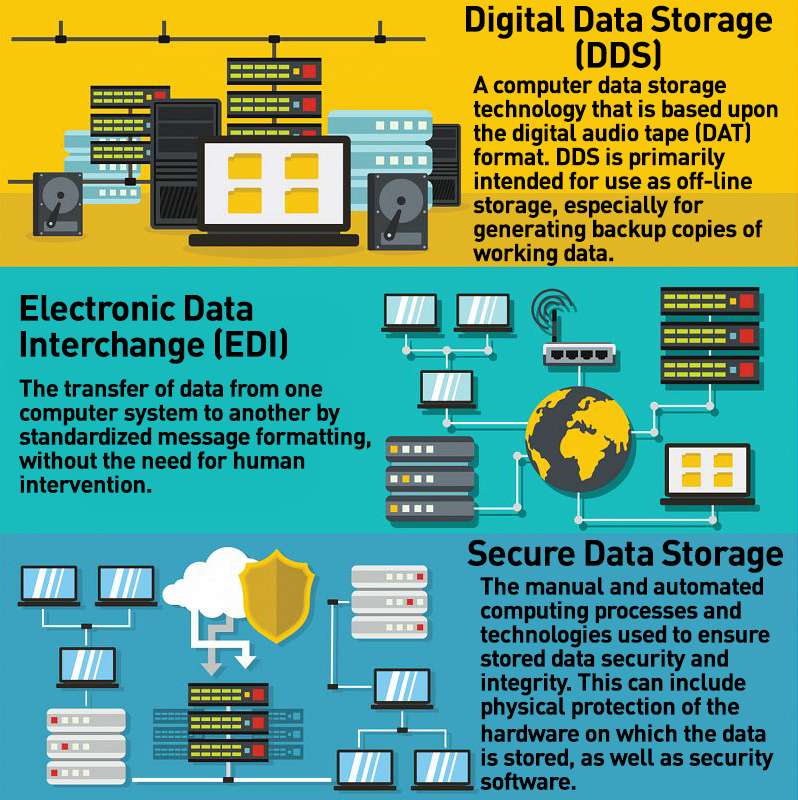The Impact of Effective Data Destruction on Cyber Security Threat Administration
The Impact of Effective Data Destruction on Cyber Security Threat Administration
Blog Article
The Significance of Effective Data Devastation Practices in Shielding Sensitive Information and Ensuring Computer System Safety And Security
In a period where information violations are progressively typical, the significance of efficient information destruction methods can not be overstated. Carrying out robust information destruction methods not just alleviates these dangers yet likewise aligns with lawful conformity needs, guaranteeing that companies promote their online reputation and foster client depend on.
Comprehending Data Destruction
Recognizing data destruction is essential in today's electronic landscape, where sensitive info can easily be compromised. Effective information damage involves not just removing documents yet ensuring that data is irretrievable with extensive methods. This process is crucial for companies that handle private client info, intellectual home, or internal records, as any kind of violation can lead to extreme economic and reputational repercussions.
Information destruction incorporates different strategies, including shredding physical media, degaussing magnetic storage tools, and using software-based services that overwrite information numerous times. Each method offers a certain objective and should align with the sensitivity of the info being gotten rid of. Physical devastation is frequently preferred for hard drives consisting of very private information, while software application methods may suffice for much less sensitive details.
Furthermore, adhering to sector requirements and laws, such as the General Information Security Guideline (GDPR) or the Health Insurance Policy Transportability and Responsibility Act (HIPAA), is critical for compliance and to minimize legal dangers. Organizations needs to establish a robust information devastation plan, train workers on best techniques, and frequently examine their treatments to guarantee that all delicate info is dealt with firmly and effectively.
Threats of Inadequate Practices
Inadequate information damage practices reveal organizations to substantial dangers that can have far-ranging consequences. When delicate details is not effectively gotten rid of, it continues to be prone to unauthorized accessibility, which can result in data violations and identity theft. Such cases not just compromise the protection of individuals yet also tarnish the organization's reputation, resulting in a loss of customer count on and prospective financial repercussions.
In addition, regulative compliance is significantly rigid in numerous industries. Failing to comply with information damage laws can result in hefty fines and lawsuits versus organizations. These fines can strain funds and draw away interest from core service procedures.
On top of that, the abuse of residual information can lead to intellectual property theft or corporate espionage, jeopardizing affordable advantages (data destruction). The effect of inadequate data destruction expands beyond immediate monetary losses; it can likewise cause long-term damages to brand integrity and market position

Organizations have to identify that data safety is not exclusively about protecting against violations; it likewise incorporates the accountable monitoring of data throughout its lifecycle. Neglecting reliable information destruction methods can have devastating ramifications, highlighting the requirement for durable measures to mitigate these dangers.
Ideal Practices for Data Devastation
Executing effective data destruction techniques is vital for protecting delicate information and preserving conformity with governing criteria. Organizations should take on a multi-faceted method to make sure that information is irretrievable, therefore stopping unauthorized gain access to and possible violations.
First, information should be classified based on level of sensitivity, permitting organizations to apply website here appropriate devastation approaches tailored to the degree of threat. For electronic information, making use of software-based data-wiping devices that abide with sector requirements can properly overwrite existing information. Physical destruction techniques, such as shredding or degaussing, are vital for devices that store delicate info, making sure total eradication.
Establishing a clear information retention policy is vital, outlining the length of time various sorts of info need to be preserved before destruction. Routine audits of information storage space systems are likewise required to recognize out-of-date or unnecessary data requiring elimination.
Moreover, training employees on the value of information destruction and the details protocols to follow fosters a society of safety within the organization. Ultimately, preserving documents of information destruction processes supplies accountability and supports compliance with outside guidelines and inner plans. By adhering to these finest practices, organizations can significantly mitigate the dangers connected with information exposure.
Legal and Compliance Factors To Consider

Failing to follow these laws can result in severe charges, including considerable fines and reputational damage. Organizations has to apply a durable data devastation policy that lines up with these lawful frameworks and supplies clear guidelines on the appropriate techniques of data disposal, whether physical shredding or digital cleaning.
In addition, maintaining documents of data devastation activities is crucial for demonstrating compliance throughout audits or evaluations. By prioritizing lawful and conformity considerations, companies can boost their data protection i was reading this pose and foster depend on with stakeholders and customers, ultimately adding to a more secure data administration setting.
Benefits of Effective Information Damage
Efficient data devastation practices extend beyond mere conformity; they provide considerable advantages to companies that prioritize them. By making sure that delicate details is irretrievably destroyed, companies reduce the risk of data violations and the prospective monetary repercussions associated with them. This proactive technique not only safeguards against unauthorized accessibility but additionally improves the general trustworthiness of the organization in the eyes of customers and stakeholders.
Applying durable data devastation methods, such as physical devastation of storage tools or advanced data cleaning great site methods, adds to the fortifying of an organization's cybersecurity position. data destruction. It minimizes the chance of copyright burglary and secures exclusive details, thus maintaining an affordable side in the marketplace

Conclusion
In final thought, reliable data damage methods are crucial for guarding delicate information and improving total computer system safety. Eventually, a dedication to robust information devastation techniques promotes a culture of obligation, thereby enhancing an organization's cybersecurity pose and keeping client trust.
Report this page